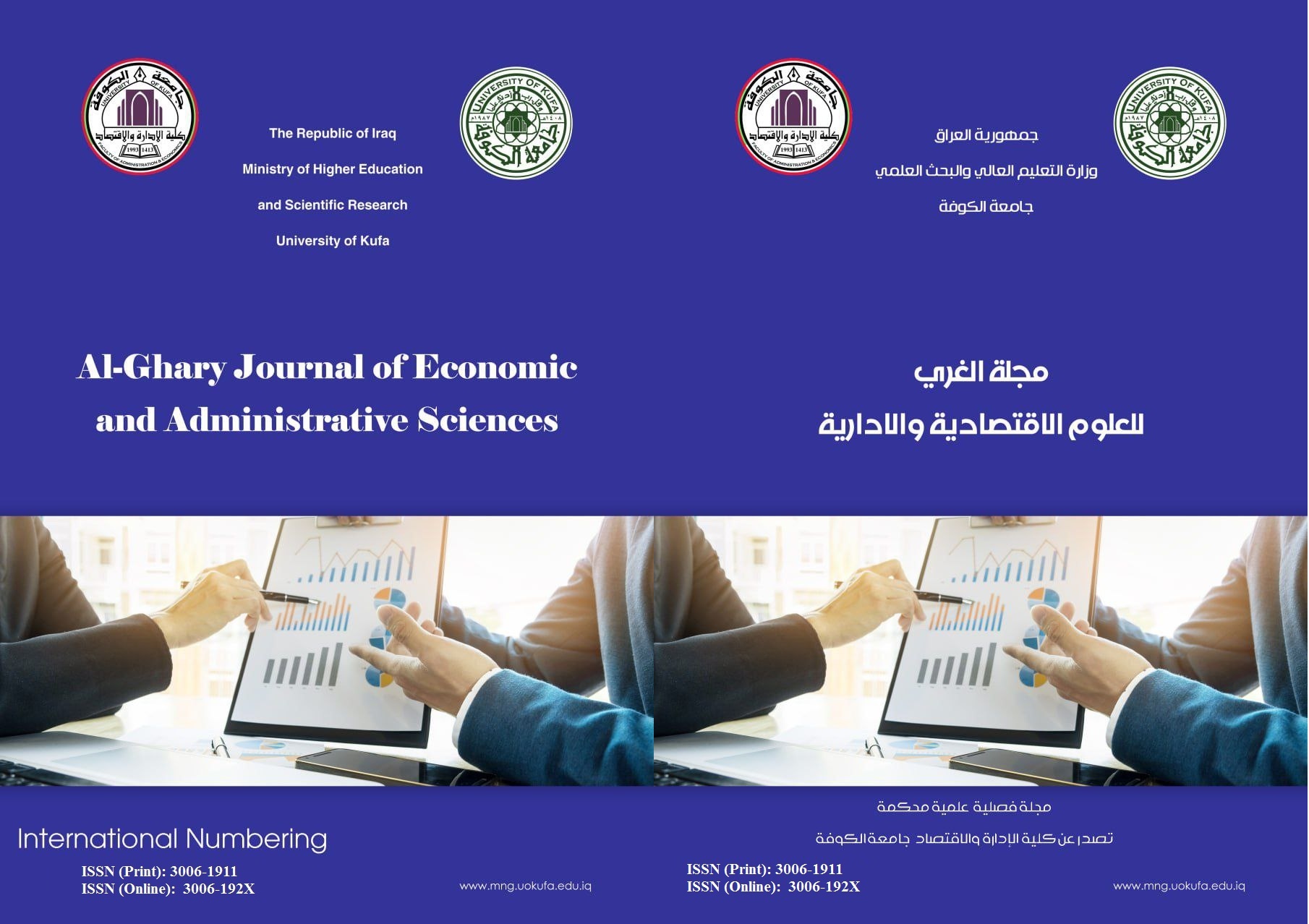Abstract
This study aims to construct an optimal investment portfolio in the Iraq Stock Exchange by applying two key financial models: the Capital Asset Pricing Model (CAPM) and the Cut-off Rate Model. The analysis covered data from 59 listed companies across seven main economic sectors over the period 2017–2023 .
The methodology involved calculating the annual returns for each company and comparing them to the risk-free rate (Rf), in addition to estimating the beta coefficient and variance to assess systematic risk. The Treynor Ratio and Cut-off Rate were utilized to evaluate the investment efficiency of the selected companies.
The findings revealed that companies in the agriculture, telecommunications, and industrial sectors achieved the highest return-to-risk ratios, while weaker performance was observed in some banking and insurance companies. The comparison between the models indicated that the Cut-off Rate Model provided more accurate guidance in selecting high-performing companies by jointly considering return and risk. On the other hand, CAPM served as a valuable reference for evaluating the relationship between expected return and systematic risk.
The study concludes that the integration of both models contributes to building a more efficient investment portfolio and offers reliable quantitative tools for investment decision-making in emerging markets such as Iraq.
The methodology involved calculating the annual returns for each company and comparing them to the risk-free rate (Rf), in addition to estimating the beta coefficient and variance to assess systematic risk. The Treynor Ratio and Cut-off Rate were utilized to evaluate the investment efficiency of the selected companies.
The findings revealed that companies in the agriculture, telecommunications, and industrial sectors achieved the highest return-to-risk ratios, while weaker performance was observed in some banking and insurance companies. The comparison between the models indicated that the Cut-off Rate Model provided more accurate guidance in selecting high-performing companies by jointly considering return and risk. On the other hand, CAPM served as a valuable reference for evaluating the relationship between expected return and systematic risk.
The study concludes that the integration of both models contributes to building a more efficient investment portfolio and offers reliable quantitative tools for investment decision-making in emerging markets such as Iraq.
Keywords
CAPM
Cut-off Rate
Investment Portfolio
Iraq Stock Exchange
Abstract
تهدف هذه الدراسة إلى بناء محفظة استثمارية مثلى في سوق العراق للأوراق المالية من خلال استخدام نموذج تسعير الأصول الرأسمالية (CAPM) ونموذج معدل القطع (Cut-off Rate). وتم تحليل بيانات (59) شركة مدرجة في السوق للمدة من (2017–2023) موزعة على سبعة قطاعات اقتصادية رئيسية.
اعتمدت الدراسة على حساب العائد السنوي لكل شركة ومقارنته بمعدل العائد الخالي من المخاطرة (Rf) إضافة إلى تقدير معامل بيتا وتباين الأسهم لتحديد مستويات المخاطرة النظامية، واستخدام مؤشري Treynor ومعدل القطع لتقييم الكفاءة الاستثمارية.
أظهرت النتائج أن الشركات العاملة في قطاعات الزراعة والاتصالات والصناعة حققت أعلى نسب عوائد مقارنة بالمخاطرة، بينما تركز الأداء الضعيف في بعض شركات المصارف والتأمين. كما بيّنت المقارنة بين النموذجين أن نموذج معدل القطع أكثر دقة في اختيار الشركات ذات الأداء المرتفع بعد الأخذ بعين الاعتبار العائد والمخاطرة معاً، في حين وفر CAPM أداة مرجعية لتقييم العلاقة بين العائد والمخاطرة النظامية.
خلصت الدراسة إلى أن استخدام النموذجين معًا يسهم في بناء محفظة استثمارية أكثر كفاءة، ويوفر أدوات كمية دقيقة لصانع القرار الاستثماري في الأسواق الناشئة مثل العراق
اعتمدت الدراسة على حساب العائد السنوي لكل شركة ومقارنته بمعدل العائد الخالي من المخاطرة (Rf) إضافة إلى تقدير معامل بيتا وتباين الأسهم لتحديد مستويات المخاطرة النظامية، واستخدام مؤشري Treynor ومعدل القطع لتقييم الكفاءة الاستثمارية.
أظهرت النتائج أن الشركات العاملة في قطاعات الزراعة والاتصالات والصناعة حققت أعلى نسب عوائد مقارنة بالمخاطرة، بينما تركز الأداء الضعيف في بعض شركات المصارف والتأمين. كما بيّنت المقارنة بين النموذجين أن نموذج معدل القطع أكثر دقة في اختيار الشركات ذات الأداء المرتفع بعد الأخذ بعين الاعتبار العائد والمخاطرة معاً، في حين وفر CAPM أداة مرجعية لتقييم العلاقة بين العائد والمخاطرة النظامية.
خلصت الدراسة إلى أن استخدام النموذجين معًا يسهم في بناء محفظة استثمارية أكثر كفاءة، ويوفر أدوات كمية دقيقة لصانع القرار الاستثماري في الأسواق الناشئة مثل العراق
Keywords
المحفظة الاستثمارية ، نموذج CAPM ، نموذج معدل القطع ، سوق العراق للأوراق المالية
